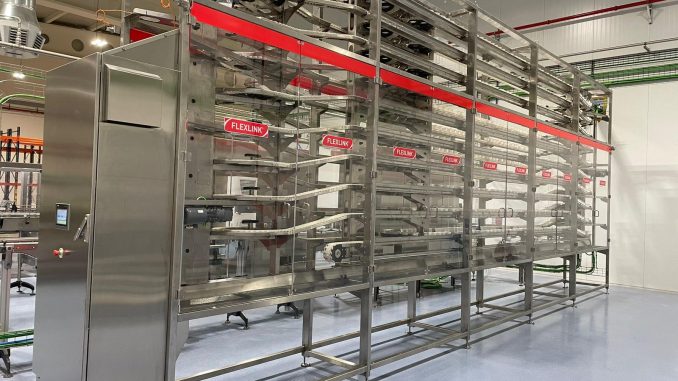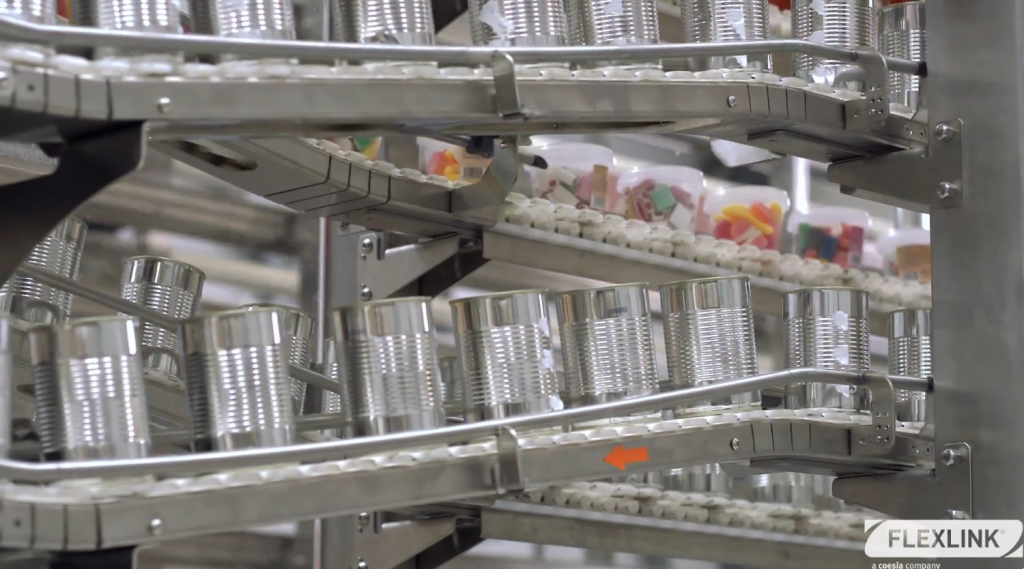
Have you ever heard about the Theory of Constraints (TOC)? The Theory defines a fundamental constraint as ‘anything that limits a system from achieving higher performance versus its goal.‘ Does this remind you of your production flow? Then, we might have some great insights for you.
The theory is based on a book named ‘The Goal: A Process of Ongoing Improvement,’ written by Eliyahu Goldrattin in the mid-1980s. Goldratt suggested that organizations can achieve their goals by identifying and leveraging a system’s constraints. The hero in this novel is a plant manager who overcame the threat of the imminent closure of his factory by transforming the company back to financial security. When production lines are often drawn up, the links between machines are underestimated. This miscalculation inevitably results in a poor-performing line, despite using high-quality, individual devices. In addition, it directly affects the system’s OEE (Overall Equipment Effectiveness).
Buffering allows your machines to run smoothly
Dynamic Buffering is designed to balance a production line when two workstations have variable speeds during a continuous run. The buffer is constructed on two parallel conveyors transporting products in opposite directions. They are connected by a moving trolley equipped with a driven transporter. When one of the machines stops, the buffer self-activates, and the outfeed conveyor halts; the products start queueing on the parallel transporter. The trolley then moves back and creates more space for queuing, and the products are amassed until all conveyors are filled.
Once the maximum accumulation point is reached, the buffer stops the previous production process (filling machine) to prevent products from queuing up. Products can then be conveyed by either the buffer or directly.
During a normal working cycle, when all machines are working, products are conveyed on the shortest route without entering the buffer zone; this helps to increase line efficiency. Therefore, it is possible to balance the production line by analyzing the efficiency of each machine and its potential downtime. Dynamic Buffering systems compensate for downtime on both sides of the machine.
When the buffer is activated, i.e., when the downstream machine stops or slows down, the buffer system automatically collects additional products and releases them when the downstream machine resumes operation, guaranteeing:
- FIFO Accumulation
- Maximized production line efficiency by independently operating each machine
- Minimal number of pieces in transit
- No product collisions (pressure less transfer)
- Fast return on investment
Dynamic Buffering can be used not only by the pharmaceutical, automotive, and FMCG industries but can be customized for all types and sizes of companies whose products vary in shape and size, such as boxes, bags, tubes, flowpacks, cans or doypacks, to name a few.

Benefits of Dynamic Flow Regulators
FlexLink’s control system automatically adjusts the conveyors’ speed to maximize capacity depending on product shape and size. Regulators also help optimize the distance between products and can be applied when the outfeed conveyors are more effective than the infeed, enabling the buffer to automatically self-empty.
Smart links are also crucial to an efficient and profitable production line. The investment in smart links is quickly offset by improving line efficiency and product quality. Gentle product handling minimizes product damage; there is no sliding on metallic surfaces. Contact-free accumulation reduces product waste and scratches, while non-steel top chains dramatically reduce maintenance costs. If the production line is managing high product volumes, the buffers can be configured with several parallel and vert conveyor loops, ensuring a maintenance-free system with easy access. Flexible and modular setups provide multi-format concepts without any change-over and the need to adjust side rails.
FlexLink has vast experience in advanced production logistics and tailor-made systems for line automation. We also offer unique software simulation that correctly sizes and adapts the equipment needed to run a profitable flow line. To understand more about our Dynamic Buffering systems and our world-class innovative, automated solutions to produce goods smarter, safer, and at lower operating costs, visit our website. Or, if you prefer to speak to one of our service engineers to find the best solution to meet your production line needs, then we will be happy to assist you. So, be inspired by the Theory of Constraints (TOC), contact us for a customized dynamic buffering solution, and remove every hurdle that limits your system from achieving the highest performance.
Dynamic Buffer – Line balancing to increase efficiency
Get in Touch
Would you like to learn more about buffering or other automated production flow solutions to increase your line performance? You are always welcome to contact us or visit our website. To never miss out on any of our blog posts, keep an eye out on this blog and follow us on LinkedIn or Twitter.


Leave a Reply